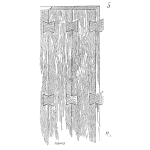
Educational institutions realize that we all learn differently and combinations of learning styles will reach most of us. Some of us learn by seeing (reading), some by doing (tactile), some by hearing (aural). Most of us have a bit of each of these and rarely only one is enough. In college and university there is reading as well as assignment and lab work. We need both, so, how do we learn once we leave the academic world? [Read more…]









